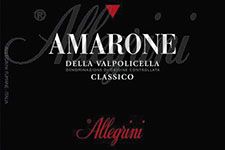
Allegrini
Allegrini
Biography
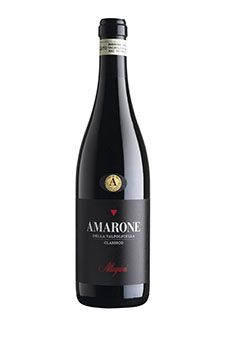
The Allegrini family has had a central role in the agriculture of the Valpolicella for many generations. A document from the year 1557 demonstrates that a certain Allegrino Allegrini had obtained the right to utilize the water of certain “fountains”, or underground springs, in Mazzurega, a part of the township of Fumane, in order to irrigate his lands, an indication that the family was already present in the area in the 16th century. And already in a pre-eminent position given that various legal acts and transcriptions between 1616 and 1630 show the Allegrini to be among the major landed proprietors of the zone. The head of the current generation, Giovanni Allegrini, therefore inherited an important agricultural tradition, but he was able to reinvigorate this tradition, becoming one of the fathers of the oenological history of his area. After the Second World War he was among the first to question the traditional viticultural practices of the Valpolicella, fearlessly overturning settled habits and customs in order to aim for high quality wines. He knew his way around the cellars as well: his father had began training him in the secrets of fermentating and aging of wine when he was twelve years old, and he had begun to learn at an early age.They called him “the spider of the casks”, because, when entertaining clients and offering them wine to taste, he leapt from large barrel to another in order to draw out one sample after another. Intelligence and passion allowed him to produce, in the 1960’s and 1970’s, some of the finest wines of his zone. His final project, which he did not live to see completely realized, was to replant the vineyard of the most famous and prestigious property of the Valpolicella, the Grola, a hill which had been abandoned in the early 1900’s: he brought it back to active and productive life and made it possible to cultivate it with the tractors which were newly available. His children followed him in his work: initially the first-born, Walter, who died prematurely in 2003, then his daughter Marilisa and son Franco, in charge, respectively, of marketing and winemaking. The vineyards are all in the classic part of the Valpolicella appellation: 175 acres which belong to the family and another 50 which are leased. With an annual production of 900,000 bottles, the estate has had an important role in establishing the concept of the cru, of vineyards with superior quality potential: two important expressions of the concept are La Grola and Palazzo della Torre, true and outstanding ambassadors of the territory in the markets of the world. An equally prestigious part of the line are the innovative Amarone and La Poja, a 100% Corvina wine from the grapes of a single vineyard which expresses all of the character of the variety. The Allegrini have succeeded in creating four aces to put on the table.
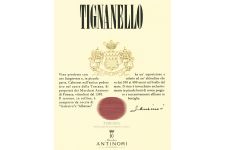
Antinori
Antinori
Biography
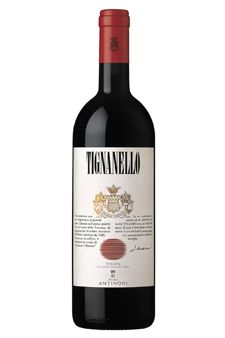
The Antinori family is closely identified with the city of Florence, to which it moved, from nearby Calenzano, in the early 13th century, first working in the field of silk production and then moving to the commerce of wine. Giovanni di Piero Antinori, in fact, joined the Vintners Guild of Florence in 1385. The family has been a protagonist in the world of Tuscan wine for 26 generations with a series of initiatives which were truly avant-garde at their time: in 1898, with the foundation of the Fattoria dei Marchesi Lodovico and Piero Antinori, a modern and organized firm had already been created. Over the last 30 years, the company guided by Marquis Piero Antinori, has become, in terms of overall business volume, the most important private group in Italy with a production of some 18 million bottles. Though closely identified with Tuscany, the Marchesi Antinori firm also owns estates in other regions, first and foremost in Umbria, owns some 3500 total acres of vineyards, and has invested in many other viticultural areas of the world, from Hungary to California and Chile. The most significant feature of the Antinori wines is their overall high quality, even in the lower-priced wines. Piero Antinori became the leader in the Renaissance of Italian wine with the creation of Tignanello, the first Super Tuscan, produced form the blending of Sangiovese and Cabernet and aged in small oak barrels. There are many jewels in the family collection created under the guidance of Piero Antinori: Solaia, born in Chianti Classico just like Tignanello; Guado al Tasso, produced at Bolgheri on the Tuscan coast; Pian delle Vigne, a Brunello di Montalcino; Cervaro della Sala, produced, along with Muffato della Sala, a prototypical dessert wine with pourriture noble (noble rot), near Orvieto in Umbria. The future guidance of the firm will be entirely in feminine hands: Piero Antinori, in fact, has three daughters, Albiera, Allegra, and Alessia. Theirs will be a new way to be in pace with their times.
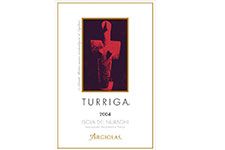
Argiolas
Argiolas
Biography
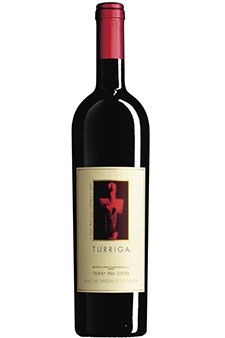
The choice of the name Argiolas for the winery and the firm was by no means a random one: this has always been a family-run operation ever since its foundation at Serdiana near Cagliari by Francesco Argiolas in the early years of the 20th century. Oral tradition has it that a certain number of vineyards were planted during the First World War by Polish and Austrian prisoners of war. The firm was given a legal structure and entrepreneurial dynamism in 1938 by Antonio Argiolas, son of Francesco, quite active in extending the marketing of wines such as Monica, Nuragus, and Cannonau, previously confined to Sardinia, first to Tuscany, Latium, and the Veneto and then to France and Germany. Wines of good quality, but sold in bulk, not in bottle, as was the case of almost all of Sardinia’s wine at the time, though these were often anonymous in terms of character and personality as well. And during the deep commercial crisis which bulk wine went through in the 1980’s, many cultivators on the island accepted EEC contributions to uproot their vineyards and cease activity altogether. Antonio Argiolas, convinced that quality sooner or later would reveal itself to be a winning choice, refused this solution to the problem, even though it would have been an extremely lucrative one for him, significant capital easily gained. The decisive move came with the arrival of his sons, Franco and Giuseppe, who took over operations in 1989 and transformed production into bottled, not bulk, wine. A decisive event was the collaboration with consulting winemaker Giacomo Tachis, the father of modern Italian oenology, who has inspired the work of house enologist Mariano Murru, his pupil. It was with the assistance of Tachis that the Argiolas brothers transformed their vineyards and experimented new methods in the cellar, the first steps on a journey which has witnessed the success of these wines in all of the markets of the world. If success can be measured with figures, those of Argiolas are imposing ones: 575 acres of vineyards in four different locations, Serdiana, Selegas, Siurgus Donigala, and Porto Pino, ten different wines in the line, and an annual production of some two million bottles: wines which have made the name of Sardinia in the world. The top wine, Turriga, an IGT Isola dei Nuraghi, is a rich blend of various local varieties, Cannonau, Carignano, Bovale Sardo, and Malvasia Nera and has entered into the exclusive club of the internationally famous. Equally important for the name of the firm have been the dry white wine Is Argiolas, a Vermentino of depth and dimension, and the sweet Angialis, a blend in which a small percentage of Malvasia amplifies and further enriches the aromas of Sardinia’s Nasco.
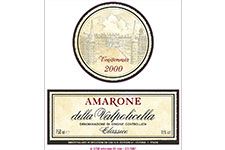
Bertani
Bertani
Biography
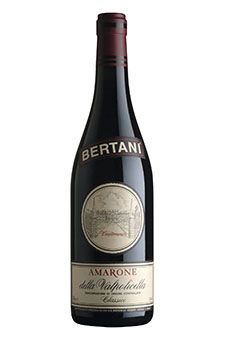
The Bertani firm was founded in 1857 at Quinto di Valpantena in the province of Verona by brothers Giovanbattista and Giovanni Bertani. Giovanbattista had the opportunity of meeting, in France, Jules Guyot, philosopher and scientist, the inventor of the world’s most widely used pruning system. It was an encounter of enormous importance, which inspired in Bertani a new understanding of the concept of terroir and drove him to adopt the most advanced production techniques of the time in order to maximize the character of his wine. The house gained its maximum glory in the years following World War II under the guidance of the second generation of the family, represented by Guglielmo Bertani and his brother, Giovanbattista junior. The brothers expanded their activity beyond the confines of the Valpantena to all of the major areas around Verona: to the northwest in the Bardolino zone, in the northeastern part of Soave Classico, where, in 1928, fermentation cellars were created in Monteforte d’Alpone, and in the classic portion of Valpolicella where, in 1957, the Novaia estate at Arbizzano di Negrar was purchased. This is the largest property of the territory with over 560 overall acres of land and some 150 acres of vineyards and with the Grezzana cellars, the heart and current headquarters of the house and one of the loveliest architectural monuments of the zone, an imposing villa erected in 1700 by Count Luigi Trezza. The firm, still property of the family, can currently boast of over 325 acres of vineyards in all of the major appellations of the province of Verona. The firm, however, is indissolubly linked to the name of Amarone: the pride of the house is the Amarone della Valpolicella Classico, an outstanding blend of Corvina, Rondinella, and Molinara and a part of the history of Italian oenology. The reknown of the wine is the result of its unusual character: the annual production of 80,000 bottles is the only Amarone to be marketed nine or ten years after the vintage and after a period of cask aging which lasts eight years. Unfortunately, in recent years it has gone on sale after a briefer aging period. But only because Bertani, a true exception in the zone, did not produce the wine in two vintages judged to be of inferior level, 1991 and 1992 and was forced to anticipate the release of subsequent vintages in order to hold its place on the market. Bertani makes only one type of Amarone. For what reason? The thesis of the firm is that a true Amarone della Valpolicella must be an expression of the entire territory, must be built on the three valleys which give wines of different character and personality, to be blended together into a cuvée which reassumes and reveals the complexity of the entire production zone.

Biondi Santi
Biondi Santi
Biography
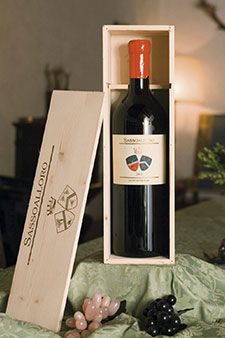
The Castello di Montepò estate, located in the Tuscan Maremma to the south of Grosseto, on the same parallel as the fortress of Talamone, is far from Montalcino. For what conceivable reason did Jacopo Biondi Santi, scion of the family which invented Brunello di Montalcino, acquire it from the nephew of writer Graham Greene in order to turn it into the headquarters of his own winemaking activities? The reason is quite simple: his father, Franco, is there to continue the traditions of Montalcino, while he, ever since 1991, has gone off on his own with the idea of producing wines more in tune with the demands of the market without, however, any idea of entering into competition with Brunello di Montalcino, a wine with which he feels the strongest possible identification. Since 1991, accordingly, he has produced Sassoalloro, made with Montalcino grapes, but in a different, innovative style compared to Brunello. And with the 1993 vintage he created another Super Tuscan. Schidione, blending Sangiovese with Cabernet Sauvignon, and Merlot. The project entered into an operative phase with the purchase of Montepò, from which he acquired the grapes for his first experiments: 900 acres of land with a great viticultural potential, dominated by a castle, a medieval fortress intact over the centuries. Perched on a summit of an imposing hill, this military structure was rendered more gracious during the Renaissance and today is in perfect condition because the husband of the previous owner (nominated director of the British Museum a few years ago), carried out an exemplary work of restoration. Jacopo Biondi Santi, has extended vineyard surface to 500 acres, planting the historic variety of his family, Sangiovese, and adding such international varieties as Cabernet Sauvignon, Merlot, and Syrah. The composition of the soil, the various micro-climates, the nearby sea all combine to create the conditions for the realization of outstanding wines, fully expressive of the enormous possibilities of the Maremma. A cru which Biondi Santi singled out in 1997 supplies the grapes for the latest great red wine of his line, a Cabernet Sauvignon to which he has given the historic name of Montepò: Montepaone. This emphasis on Super Tuscan wines, is it not in conflict with the family tradition? “Not at all”, he sustains: “in the last analysis Brunello di Montalcino was the result of a violation of the rules in force one hundred years ago, a decision to break the rules taken by my great-grandfather Ferruccio Biondi Santi. A man who, before becoming a producer of wine, had fought with Garibaldi at Bezzecca in 1866, when he was only 17 years old. He was no conformist, he was a free spirit and a rebel. I hope to resemble him at least a little”.
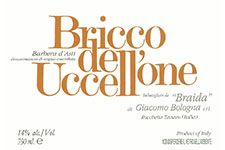
Braida
Braida
Biography
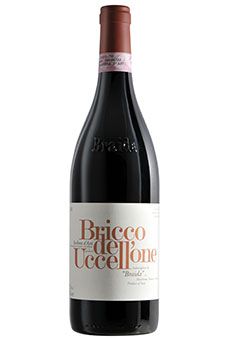
The history of the Braida firm is linked to one of the most extraordinary personalities of the world of Italian wine, Giacomo Bologna. Over 220 pounds of exuberance and sheer likeability, a man of overflowing humanity, almost to the point of caricature, ably concealed behind a mask of smiling irony, a force of nature. At 16 years of age, he had inherited, after the premature death of his father, a lovely vineyard in Rocchetta Tanaro and, along with it, the rights to its name, Braida. Thanks to this vineyard he had an unshakeable faith in Piedmont’s most popular and widely planted grape, Barbera, at the time consider a bit vulgar and plebeian. But the wine which he created with the variety, Bricco dell’Uccellone, was a horse of a different color. “A virtual copy of its patriarch Giacomo Bologna”, wrote journalist Burton Anderson, “this Barbera, aged in French barriques, takes its name from a vineyard above Rocchetta Tanaro to the east of Asti, the wine is almost excessive, powerful, warm, generous, full of fantasy and character and, in any case, completely convincing to the taste and certain to pass the test of time”. Giacomo Bologna had studied the creation of the wine after a trip to California and an encounter with André Tschelitscheff, the American oenologist of Russian origin considered the world’s greatest expert in the use of small oak barrels. Experiments had convinced him that even Barbera (which he called with the feminine article, as all true inhabitants of Piedmont do), poor in tannins but rich in acidity, could reach a new level of aristocratic elegance when aged in the barrels of French oak from the Massif Central, something that few were convinced of at the time. And he was entirely right: presented at Italy’s Vinitaly fair in 1985, the 1982 Bricco dell’Uccellone was a resounding success, thanks to which Barbera was able to enter, for the first time, the ranks of the world’s great wines. Just as his father, Giacomo Bologna died at too early an age, but his firm, Braida, has continued to enjoy great success. It is run by his two children, Beppe, a trained oenologist, and Raffaella, as exuberant as her father and with the same marketing talents in her DNA. In 1991 they decided to bottle a new Barbera which Giacomo Bologna had conceived and followed right up to the harvest which preceded his death. And they baptized it with the name which he had exclaimed after tasting the fermenting must: “we’ve got it”, “Ai Suma” in the dialect of Piedmont.
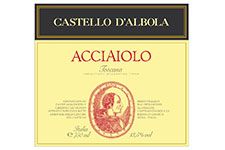
Castello d'Albola Zonin
Castello d'Albola Zonin
Biography
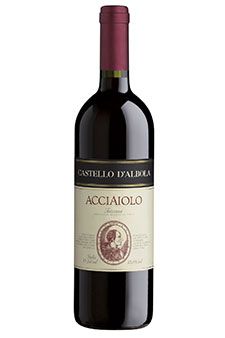
They call him “the banker of wine”, but Gianni Zonin, the foremost Italian private entrepreneur in terms of vineyard acreage, accepted to guide the Banca Poplare of Vicenza with a spirit of service to the community and has remained in charge due to the brilliant results obtained. But he did not do it for an authentic passion: his real mission in life is the land and its fruits. With a diploma in oenology and a doctorate in jurisprudence, he has directed his family’s firm in Vicenza since 1967 when it became a joint-stock company, and then became president of the firm at a mere 29 years of age. It was due to his foresight that the company, up to then a négociant house, began to concentrate its efforts on vineyard property as well in order to improve overall quality and gradually acquired sizeable vineyard properties in areas of major viticultural interest, from Friuli to Tuscany, from Piedmont to Lombardy, and from Apulia to Sicily. Working with this spirit, Zonin became a group which, alongside the large bottling cellars in Gambellara near Vicenza, can boast of nine viticultural estates, eight in Italy and one in Virginia in the USA, 4500 acres of vineyards, 350 employees, and 23 million bottles per year of production. The philosophy of Zonin is that the true challenge is not to produce limited numbers of good wine at high prices but rather, due to large volume, good wine at accessible prices for a wide public. Gianni Zonin has won this challenge: Acciaiolo, a sumptuous blend of Sangiovese and Cabernet produced at the Castello d’Alba in Radda in Chianti, is a Super Tuscan of important personality and Deliella, a fascinating Nero d’Avola from the Feudo Principi di Butera, is one of Sicily’s most prestigious wines.
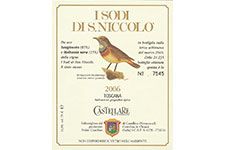
Domini Castellare di Castellina
Domini Castellare di Castellina
Biography
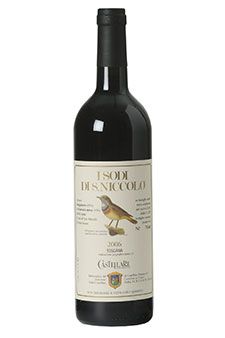
Castellare di Castellina is a 225 acres estate in the heart of Chianti Classico at Castellina in Chianti, created in 1968 by the fusion of five different small farms. In 1979 it was purchased by Paolo Panerai, editor in chief and publisher who, over the years, has turned it into one of most prominent estates of Chianti Classico. Vineyard acreage is 75 acres, 60 of which in a natural amphitheater of hills with a south-western exposure; annual production is approximately 240,000 bottles between DOCG and IGT wines. Red wines dominate, but there are three white wines as well, structured, intense, and long-lived. Yields per acre, particularly for the red wines, are below those permitted by appellation rules. Vine research, carried out immediately after purchase, enabled the estate to select the finest clones of Sangioveto, the local version of Sangiovese, and of Malvasia Nera. These are the varieties which give maximum quality and character, particularly in the case of I Sodi di San Niccolò, a wine included in the Wine Spectator list of the world’s 100 best wines two years in a row and with a raiting of 97/100 by Parker. The word “sodi” was used by Tuscan peasants to describe vineyards which needed to be worked by hand due to the hardness, or solidity, of the soil and the steepness of the slopes.
I Sodi di San Niccolò, a selection of the two finest vineyards (or crus) of the estate, demonstrates that the native varieties of the zone are perfectly capable of giving high-level wines, without the use of international grapes in the blend. Castellare (now known as Domini Castellare di Castellina, as there are now four domaines) has promoted the joint-venture with Domain Baron de Rothschild-Lafite created in 2000, Rocca di Frassinello. The first wines from the cellars, designed by famed architect Renzo Piano, were from the 2004 vintage and were produced under the supervision of oenologists Alessandro Cellai and Christian Le Sommer. The wines from the 2005 vintage have already received widespread recognition and maximum scores. The second label, Le Sughere di Frassinello, is included in the Top 100 of Wine Spectator.
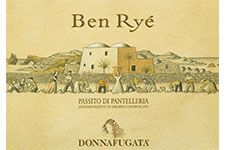
Donnafugata
Donnafugata
Biography
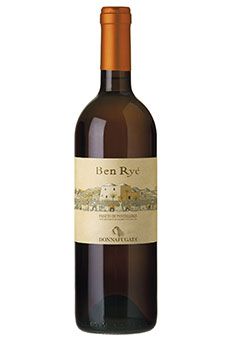
The name Donnafugata, literally “woman in flight”, refers to the story of Hapsburg queen Maria Carolina, wife of Bourbon king Ferdinando IV who, in the early 19th century, fled Naples at the arrival of the French troops of Murat and took refuge in the heart of the Belice area of Sicily. The writer Giuseppe Tomasi di Lampedusa, in his famous novel “The Leopard”, then indicated with the name Donnafugata the possessions of the Prince of Salina.
The Donnafugata firm was created by a family which, for 150 years, has strongly believed in the oenological potential of the land of its origins.
Giacomo Rallo and his wife Gabriella, both pure-blooded Sicilians and both convinced that, to grow, it is always necessary to be open to the changes which are occurring in the world, began a new project in 1983, an entrepreneurial adventure. The point of departure were the historic cellars of the family at Marsala and the vineyards of the Contessa Entellina area, and the search for exceptional quality arrived as far as the island of Pantelleria. Their children, José and Antonio, have now joined their parents in the firm, enabling the house to grow at an even faster pace and become one of the symbols of the rebirth of Sicilian wine.
The family project is based by total attention to every single detail in order to achieve objectives which are constantly more ambitious, that of realizing the entire potential of the territory with an absolute respect for the environment and the typical character of Sicilian wine.
This philosophy is even more present in the production of the firm’s most important wines, the crus of Contessa Entellina and of Pantelleria.
Mille e una Notte is a red wine which blends Nero d’Avola with small percentages of other native varieties, an impenetrable ruby red in color, ample on the nose and structured on the palate. Vigna di Gabri, instead, is a fragrant white wine, 100% Ansonica, named for Gabriella Rallo who deeply desired a wine of this type, a totally achieved example of the Ansonica grape which expresses all of its characteristics, a variety whose important potential has become even more widely accepted in recent years. Last but not least, Ben Rye, “son of the wind” in Arabic, a Passito di Pantelleria DOC, deep and of great complexity, a pride of the firm which proclaims its extraordinary character and expressiveness right from the start, from the amber-tinged yellow of exceptional brilliance.
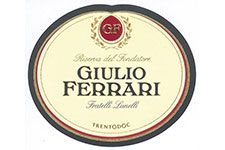
Ferrari
Ferrari
Biography
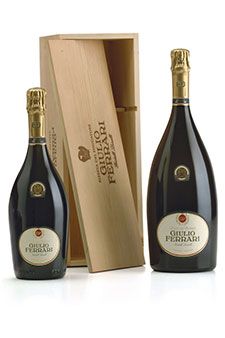
Is destiny written in a name? Improbable, it would seem, but it is a fact that the Ferrari firm of Trento, just like the racing car team of Maranello, is, in its sector, that of sparkling wine, the best known and most prestigious. And, just like the automobile company, the sparkling wine house bears the name of its founder, but is not run by his descendants. Because, like Enzo Ferrari, Giulio Ferrari, a native and nobleman of the Trentino region, who studied viticulture at Montpellier and completed his studies in Champagne, returning to his native region in 1902 to create a sparkling wine firm, had no heirs. For this reason, in 1951, at seventy years of age, he decided to sell his company to Bruno Lunelli who, after having worked as a shop assistant for the parents of Cesare Battisti, an Italian patriot hung by the Austrians, had opened a wine shop just a few doors away, near the cathedral of Trento. Ferrari, nonetheless, continued to be active in the firm until 1965, the year of his death. Bruno Lunelli, who at the time had only 63, left the reins of the company to his children four years later, perhaps with a presentiment of the premature death which would arrive four years later. But two years previously he had the satisfaction of inaugurating the company’s new headquarters at the gates of Trento, near the Ponte di Ravina bridge.
Ferrari’s supremacy in the production of high quality sparkling wine was gained through the efforts of three of his five children: Gino, the president of the company, Franco, who ran the wine shop near the cathedral, and Mauro, the oenologist, who perfected, in 1972, the legendary Riserva del Fondatore, the classic blanc de blancs of Giulio Ferrari, an all-Chardonnay cuvée from a single vineyard at Maso Pianizza, a true cru which, for soil and micro-climate, can be considered a masterpiece of nature. Made solely from grapes which are perfectly ripe, it is produced only in fine vintages with a period of aging on its lees which can last up to ten years. The object of tireless care and attention, it is an elegant Spumante, delicate, and exceptionally long-lived. It is the peak of a production pyramid of 4.8 million bottles annually, and this is the core business of a small empire which also owns a series of agricultural estates which produce still wines, the Surgiva mineral water, and the grappa distillery Segnana. The third generation of the Lunelli family is now in charge, and consists of three cousins: Matteo, vice-president; Marcello, oenologist; and Camilla, who directs contacts with the public and with the clientele. She is the first woman to arrive in an executive position in the firm.
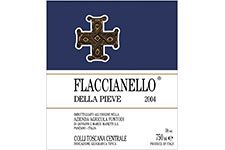
Fontodi
Fontodi
Biography
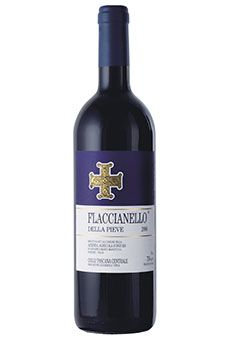
The Manetti family has been famous for generations in Chianti, but not for wine: its renown is linked to the production of the terracotta of Impruneta. A well deserved fame: it was the firm of Dino and Domiziano Manetti which produced the roof tiles for the restoration work on the dome of the cathedral of Florence and provided the flooring for the Uffizi gallery as well. Nowadays it is difficult to say whether the Manetti are better known for their wine or for the terracotta, even if their adventure in the world of wine is far more recent. The first step was the purchase, in 1968, of the Fontodi estate in the heart of the Florentine part of Chianti Classico, near the country church of San Leonino in a valley which opens up to the south of Panzano. The area has been known for centuries as “the golden slopes” for its exceptional position: the soil is difficult to work but the grapes are of exceptional quality. The sign that something had changed for the Manetti in their rapport with what had simply been a country house came in 1980, when the entire family moved to the property. It was the younger generation which took charge of the vineyards and the cellar, the young children of Dino, Giovanni and Marco, though always with the close supervision of the elder generation, their father and uncle.
In fact, it was with the next vintage, in 1981, that new wine was born alongside the traditional Chianti Classico and Chianti Classico Riserva, an offering that would create a sensation, Flaccianello della Pieve. The wine was conceived, along with the younger Manetti brothers, by a young oenologist, Franco Bernabei, a man with important ambitions. A pure Sangiovese from the best exposed vineyard of the property, the wine was fermented in a way which was both traditional and innovative: the period of skin contact was a lengthy one, but with a constant control of the temperature. After the initial phase, the wine, in the following March, went into small oak barrels for aging, French oak from the Massif Central, and after a lengthy aging period was given additional bottle aging time as well. Since then Fontodi has made enormous progress, the cellars have been enlarged, more land has been acquired (of the estates 275 acres, 175 are planted to vines, all cultivated according to the dictates of biological agriculture), new wines have been created, but the fame of the estate is linked to Flaccianello della Pieve, which in fine vintages truly reaches the heights. Other classy wines are not lacking in the estate’s portfolio: the spicy Case Via and the Chianti Classico Riserva from a special vineyard, Sorbo. Flaccianello is in a class of its own.
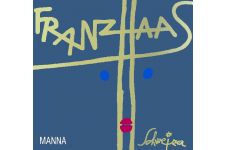
Franz Haas
Franz Haas
Biography
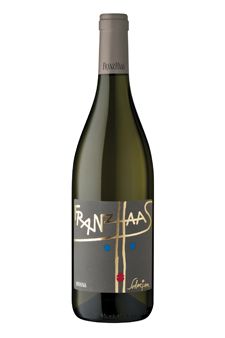
Franz Haas, or rather Franziskus Haas, is the sixth generation of his family, and since 1880 the male members of the family all bear the same name and the same passion for wine and the vine, and a certain meticulousness in their work. Haas has a cellar in Montagna, a small town in the province of Bolzano on the eastern side of the Adige river, just above Egna, and his vineyards (125 acres between proprietary parcels and other leased plots) are distributed among the those with the finest soil and exposure. Haas has passed a good part of his life travelling all over the world, visiting the most important zones and studying their vineyards, experimenting and seeking new solutions to his problems in the effort to continuously improve. Even though a certain international success has been achieved, he is certainly not resting on his laurels, but continues to study in order to improve – even marginally – in each and every vintage, because absolute quality is impossible to obtain but necessary to pursue with passion and commitment. His Holy Grail is Pinot Noir, a difficult grape to cultivate, which only occasionally, and then in the hands of the most able producers, is capable of giving outstanding results. With the stubbornness which is part of his character, Haas has managed to achieve results, in the Adige valley, which only a few succeed in obtaining in Burgundy. This is documented by his regular Pinot Noir, but above all by his selection, Schweizer, named after local artist Richard Schweizer. A lovely wine, a medium ruby red in color with the classic aromas of red fruit and berry fruit, and a sinuous body of great elegance. Along with this there are, in his line, a Lagrein, a classic varietal wine of the South Tyrol, and Istante, an equally classic Bordeaux blend (Cabernet and Merlot). There is also a range of varietal white wines – Pinot Grigio, Müller Thurgau, Pinot Bianco and Gewürztraminer – along with Manna, a homage to his wife Luisa Manna, which introduced the concept of cuvée to the Alto Adige, i.e. a blend of Riesling, Chardonnay, Sauvignon, and Trainer. A wine of character, structured and far more long-lived than most other northern Italian white wines. The range is completed by a most original and very spicy Moscato Rosa, produced from the dried berries of the grape of the same name.

Livio Felluga
Livio Felluga
Biography
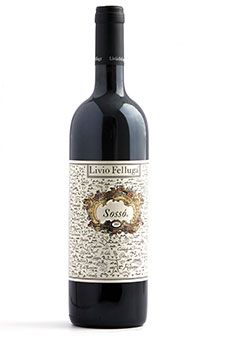
When Livio Felluga created, in 1956, his original label, a map of the hills of his vineyards, the place where his wines were born, the legislation which established Italy’s system of wine appellations was yet to appear. Virtually unchanged from that date, in addition to being an excellent marketing instrument, the label also testifies to Felluga’s deep conviction that great wine can only come from a cru, a great vineyard. And, in fact, when the appellations began to appear, he had already gone beyond them: he fermented his grapes vineyard by vineyard and proudly stated their name on the labels. Where did this pioneering awareness come from? He responds with a quip: “the family has been working in wine for five generations, it has been our bread and butter”. His great-grandfather produced Refosco and Malvasia in Istria, as did his grandfather, and a part was used in the small family trattoria of Isola d’Istria. This territory, which was part of the Austro-Hungarian Empire, was annexed by Italy after the First World War, but the family did not change its way of life for this reason. On the contrary, to expand it, it sent one of the sons, Giovanni, to sell the wine at Grado, a seaside resort much loved by the aristocracy of central Europe. Livio, Giovanni’s son, accordingly grew up on this lagoon, right next to the Collio and Colli Orientali del Friuli areas, and dreamed of making wine in a place with such an important potential. The outbreak of World War II prevented him from carrying out his plans: he was called back to arms in 1940. Three years in Libya and then prison at Cap Bon and three more years in Scotland. And, at his return, the frontier of his country had changed once again. But he, as soon as possible, return to his first love: in the early 1950’s he acquired a few acres of land at Rosazzo in the Colli Orientali appellation. “Difficult years”, he recounts. “The hillsides were totally abandoned. The first factories sprung up and the cultivators preferred the city and factory work. The landscape itself began to change. My challenge was to resist all of that and make the hillsides productive once again”. He chose Brazzano in the Collio appellation as the site for his cellar, a cellar which has grown as production has increased. He could enjoy his position as patriarch, his reputation as re-founder of the viticultural traditions of Friuli, but not even his advancing age has slowed him down. He was among the first to understand that these vineyards could not continue to produce every type of wine envisaged in the appellation rules: only the varieties which gave excellent results in their specific sites were to be cultivated. Fewer wines but with more personality. With the aid of his children, Maurizio, Andrea, Elda, and Filippo, despite 90 years of age, he is carrying out this program of high level vineyards at Venco, Ruttars, Rolàt in the Collio appellation and at Rosazzo in the Colli Orientali. He has already achieved two very satisfying results: Terre Alte, a blend of Tocai, Pinot Blanc, and Sauvignon, for over a decade among the top white wines of Friuli, and Sossò, which blends Merlot, Refosco, and Pignolo, first produced in 1989, a potent but supple red wine with aromas of berry fruit, plum jam, and spice.

Lungarotti
Lungarotti
Biography
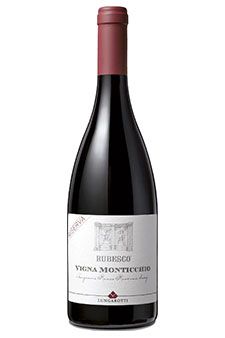
The Lungarotti cellars were founded at Torgiano in 1962 just a few kilometers from Perugia and Assisi in Umbria, and from that moment on it became a reference point for the oenology of the entire region. Giorgio Lungarotti, who had created the firm to ferment the grapes of the various landed possessions of his family, has been defined as “the man who, after Saint Francis, has given Umbria the greatest visibility in the world”. His wife, Maria Grazia, remembers him as “a pioneer”. Overstated? Perhaps, but Giorgio Lungarotti, who died in 1999, was the first to create fine wine in a region which, up till then, had little to show in terms of quality wine. To give them a certain recognition all over the world, exporting half of his production. And up until his last days, 88 years old, he was still more foresighted than others when wine was discussed. After his death, the direction of the house has passed into the hands of his daughter Chiara, aided by her sister Teresa Severini, while Maria Grazia directs the work of the Lungarotti Foundation, well known for its work in spreading the culture of wine. The house, in fact, has created at Torgiano one of the world’s most important museums around the theme of wine, compiling an historic and artistic documentation with few equals. The family continues to direct the firm, working with a full respect for values which join tradition and history to territory and adds in an innovative spirit open to experimentation and new developments. Future-oriented, the firm is nonetheless firmly anchored in the present, and a few years ago acquired an estate at Montefalco in order to include Sagrantino in its wide range of wines. The most prestigious Lungarotti wines, however, are the lengthily-aged red wines (only marketed four or five years after the harvest) from two crus: the Rubesco Vigna Monticchio Riserva, a blend of Sangiovese and Canaiolo, and San Giorgio, which uses Caberent Sauvignon along with the regions native grapes. This was the first Super Umbrian of the region: first produced in 1977, it is released only in superior vintages.
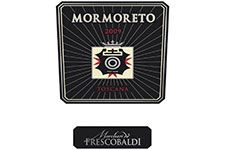
Marchesi de' Frescobaldi
Marchesi de' Frescobaldi
Biography
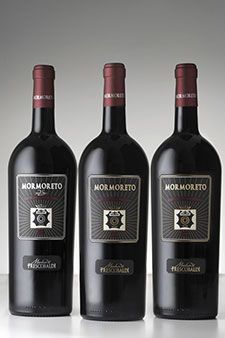
The Frescobaldi name goes back 700 years in the world of wine and, by now, has involved 30 generations of the family. In the 1960’s, Vittorio Frescobaldi, proprietor of the house along with his brothers and sisters, Dino, Maria, Ferdinando, and Leonardo, gave a modern organization to this tradition, creating a firm headquartered in Florence with nine estates in Tuscany and another in Friuli. There are some 2250 acres of vineyards in zones with very different soils and climates, source of the seven million high-level bottles produced annually. It is not easy to fully explain a complex reality such as this to customers, connoisseurs, and journalists. The Frescobaldi have succeeded by showing, in a large room, the significant elements of the major estates, proposing to visitors a virtual trip through this bio-diversity employing all five senses: aroma and taste, first and foremost, by tasting the most important wines along with the gastronomical specialities of their zones and identifying, one by one, fragrances and essences which the estate oenologist presents.
It is a kind of game which also involve sight, touch, and even sound, with carefully chosen music as accompaniment as well. An original way to get to know the historic Frescobaldi properties: Castello di Pomino, the Castiglioni estate, Castello di Nipozzano. And more recent acquisitions as well: Castelgiocondo in Montalcino, Santa Maria in the Tuscan Maremma, Luce della Vite, originally a joint-venture with the Mondavi family of Napa Valley in California, now entirely owned by Frescobaldi, and finally the Attems estate in the Collio hills of eastern Friuli. It is from the crus of Nipozzano that Montesodi and Mormoreto are made, while Lamaione comes from Castelgiocondo: the Super Tuscans which have given the greatest satisfaction to the family.
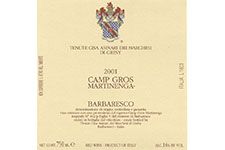
Marchesi di Grésy - Azienda Agricola Martinenga
Marchesi di Grésy - Azienda Agricola Martinenga
Biography
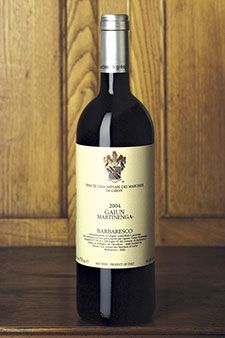
Martinenga, “a place which is sacred to the god Mars”, was the name given by the ancient Ligurian tribes to the woody spot just below the height beneath which they had found refuge (in Latin, asylum) from the Roman legions which, after conquering the nearby city of Alba, prepared to take control of the surrounding area. Two thousand years later, the place names of this part of Piedmont are still linked to these remote events. Asili and Martinenga, in fact, are among the most famous vineyards of Barbaresco, the ancient barbarica sylva (“barbarian woods”). And it is on the Martinenga vineyard, and other splendid possessions of the estate of this name, that the di Gresy marquises have founded their renown as producers of excellence.
It was in 1973 that Alberto di Gresy began to ferment the Nebbiolo grapes of his 27 acres of proprietary vineyards, creating wines which were considered among the finest of the Barbaresco appellation. The three Nebbiolo-based crus, Martinenga, Gaiun, and Camp Gros, symbolize and incarnate all the elegance which this superlative terroir regularly, even in difficult vintages, manages to express.
The production philosophy of Marchesi di Gresy is based on scrupulous and careful vineyard work which aims at the finest possible grapes, and cellar decisions which respect both tradition and research for the new. The results are absolutely excellent, both with the classic native grapes and with international varieties such as Chardonnay, Sauvignon, and Merlot. But it is the Barbaresco Camp Gros which is the essence of the great wines of Piedmont; first produced in 1978, and since then only in superior vintages, it is a selection of a small part of the Martinenga vineyard which rises towards Rabajà. A “summa” of the oenological excellence of the Langhe area in which environment and biology, together with the works of man, combine to create extraordinary characteristics of complexity and balance and confer exceptional aging ability as well.
In addition to the Martinenga estate, Marchesi di Gresy can rely on its Monte Aribaldo property in the township of Treiso, where Dolcetto, Chardonnay, and Sauvignon are cultivated, and on the La Serra and Monte Colombo properties, excellent sites for Moscato, Barbera, and Merlot.
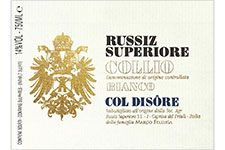
Marco Felluga
Marco Felluga
Biography
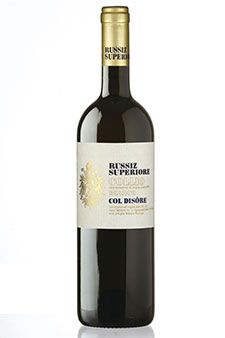
Brother of Livio Felluga, Marco Felluga belongs to the same dynasty of producers of wine. With a childhood at Grado and oenological studies at the school of Conegliano, it was inevitable that he should fall in love with the nearby Collio hills, where a magical landscape is one with a climate and soil with important potential for fine wine. From the lagoon of Grado to the hills of Gradisca d’Isonzo, therefore, it was only a short step for Felluga, who founded his own cellar at the latter spot.
The balance between modern innovation and modern technology on the one hand, and the traditions of the zone on the other, have made the house a reference point for the entire territory. It is no accident that the local producers consortium has been guided by Felluga in recent years. Today, to follow in the footsteps and in the philosophy of absolute quality is his son Roberto, the fifth generation of the family. Vineyards amount to 300 acres and production to 600,000 bottles annually, and two wines top the quality pyramid: Carantan, a red, and Molamatta, a white. They make Marco Felluga a widely respected firm, but only the leader of a group with three other estates. The most important is Russiz Superiore, 240 total acres and 175 planted to vines, a place imbued with the history of Friuli whose owners, in the 13th century, were the Torre e Tasso princes.
Acquired in 1966 at Capriva di Friuli, its annual production is 200,000 bottles and its leading labels are the white Col Disôre and the red Riserva degli Orzoni.
The Castello di Buttrio estate, instead, was purchased in 1994 and is endowed with a rich patrimony of vineyards planted with selections of native grapes from the old vineyards of the property. Two wines are produced: the white Castello di Buttrio-Ovestein and the red Castello di Buttrio-Marburg. The last property to become part of the group consists of 125 acres of vineyards at San Casciano Val di Pesa, near Florence in Tuscany. This estate, San Nicolò a Pisignano, produces a Sangiovese-based cru, Sorripa.
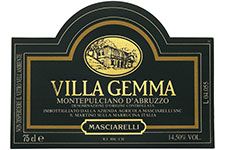
Masciarelli
Masciarelli
Biography
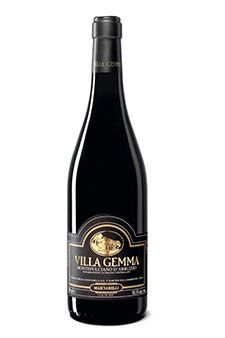
The decision to produce wine came to Gianni Masciarelli in 1981 after an inspiring trip to France. Following in the footsteps of his grandfather, who had cultivated a small vineyard, he began to bottle Trebbiano and Montepulciano in the property situated at San Martino sulla Marruccina in the province of Chieti, twelve miles from the Adriatic Sea and the same distance from the Majella mountain chain. Given this special location, the vineyards of San Martino, 1300 feet above sea level if only six acres in size at the beginning, enjoy a very favourable climate.
More recently, vineyards in all of the provinces of the Abruzzo region have been acquired, with a special emphasis on the cultivation of Montepulciano among red grapes, Trebbiano and Chardonnay among white varieties. The estate now consists of some 800 total acres, 680 planted to vines; with the widely acknowledged quality of his top wines, Gianni Mascarelli has contributed to a greater recognition of the character of Abruzzo wines with a decisive emphasis on the quality and personality of its native grapes and the typicality of its wines. These are the fundamental values on which his entire production philosophy is based.
Production is divided into three separate lines, widely popular not only in Italy but in international markets as well: Masciarelli Classico, Villa Gemma, and Marina Cvetic, wife of Gianni Masciarelli. Marina Cvetic is today, after the death of her husband, the main representative of the winery. The lines group various labels produced in the different parts of the firm located in the provinces of Chieti, Teramo, and Pescara. The finest wine of all, however, since its debut vintage of 1984, is the Montepulciano d’Abruzzo Villa Gemma, a grand red wine, potent and concentrated, an authentic standard-bearer of the Abruzzo; along with these the Trebbiano and Chardonnay Marina Cvetic are well worth mentioning. But Villa Gemma is worthy of the closest possible attention: a deep, somber, ruby red which already shows its imposing character, fruity, balsamic, and spicy in aroma with notes which range from eucalyptus to chocolate and leather. And the Trebbiano Marina Cvetic is a wine of admirable structure and richness as well, a milestone among white wines of real body with its opulent, unmistakeable notes of peach, papaya, and lavender which make it a leading wine of Italy’s center-south.
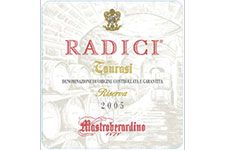
Mastroberardino
Mastroberardino
Biography
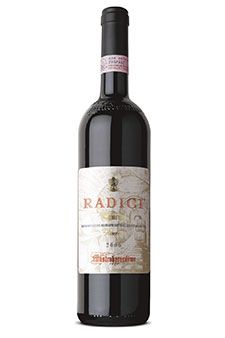
Mastroberardino holds the record of being the oldest winery of Campania. Founded in the early 18th century, it is headquartered in 19th century cellars in the township of Atripalda. At the tiller of this historic company today is Piero Mastroberardino, son of Antonio Mastroberardino who, in the first years after World War II, with prophetic foresightedness, courageously placed his stakes on the native grape varieties of the Irpinia zone, Fiano, Greco, and Aglianico, fermenting and bottling them as pure varietal wines.
A strong tie to the tradition and values of the territory is still strongly felt at Mastroberardino, but has not prevented the house from equipping its cellars with the most up-to-date technology and from investing in research aimed at exploring the potential of “new”, but often ancient, vine varieties to be found in Campania. A strong belief in quality, which finds happy expression in the frescoed vaults of the cellar beneath which the wines age.
To work with high quality grapes, Mastroberardino owns properties in all of the major areas of Irpinia. Among the major selections, the Taurasi Radici and Villa dei Misteri offering merit special attention. The house interpretation of the only DOCG wine of the region is a expressive compendium of all the aromatic qualities of the Aglianico grape: cherries and blackberries, light, sweet spices, and, with more age, chocolate and game.
Villa dei Misteri, more than a wine, is a cultural project: the Piedirosso and Sciascinoso grapes used in the blend come, in fact, from five vineyards (Oste Eusino, Casa della Nave Europa, Osteria del Gladiatore, Foro Boario and Casa del Triclinio Estivo) located in the archeological zone of Pompei. With the permission of the Superintendent of Fine Arts, Mastroberrdino has given a new birth to the viticulture of the ancient city buried by the eruption of Mount Vesuvius in 79 A.D. Equally worthy of note is the Taurasi Naturalis Historia, a 100% Aglianico harvested from a single vineyard site in the town of Mirabella Eclano.
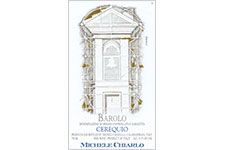
Michele Chiarlo
Michele Chiarlo
Biography
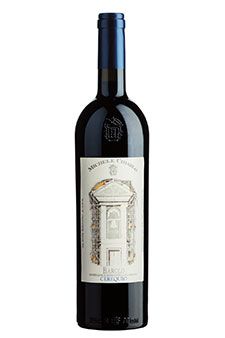
With a gradual but irresistible ascent, Michele Chiarlo, a trained oenologist and the descendant of five generations of vineyard cultivators, is now the head of a firm known all over the world, producer of a million bottles of wine, of excellent quality. The beginnings in 1956 were modest: a small cellar at Calamandrana in the province of Asti which sold Moscato and Barbera. The cellar was called “Duca d’Asti”. “Wine”, at the time, “was a low-level product”, observes Chiarlo with some irony, “and I tried, with the name, to give it a bit of nobility”. Two years later, however, the small firm was able to age the ample and generous Barbera of the zone. It was a 1958 Barbera, in fact, which lasted as long as a Bordeaux, which enabled him to make a name for himself in the USA many years later, surprising everyone at a tasting. In order to guarantee high level grapes, Chiarlo began to purchase vineyards. He produces the full range of Piedmontese wines, and in order to ferment and age them in their various production zones he has set up three different cellars: one at Calamandrana, his headquarters, another at Gavi, and a third in the Barolo appellation. Chiarlo began in Barolo in 1982, first purchasing grapes, then leasing vineyards, and finally acquiring them. In 1989 he became the proprietor of 15 acres at La Morra, in the Cerequio cru, and a year later he purchased 3.5 acres in the historic cru of Cannubi in the township of Barolo. The plot was too steep for tractors and he had already re-modulated the terrain in a novel way for the Langhe area, but without changing the profile of the hill, planting each vine row on a small terrace which followed the curves of the slope. “In this way the vines do not shade one another”, he explains, “and the grapes ripen perfectly. But when I confronted the task, I was not at all sure that the vineyard would become mine”. Barolo has been joined, at the top of his line, by an important Barbera, La Court. In the cru which supplies the grapes, Chiarlo has created a park for works of art to give even more importance and allure to the territory. But his greatest satisfaction is the fact his work will be continued by his sons: Stefano, who studied oenology, is responsible for the vineyards and cellar together with winemaker Gianni Meleni, while Alberto, with marketing studies in his curriculum vitae, is in charge of the commercial aspects of the firm. With them, the sixth generation is on the job.

